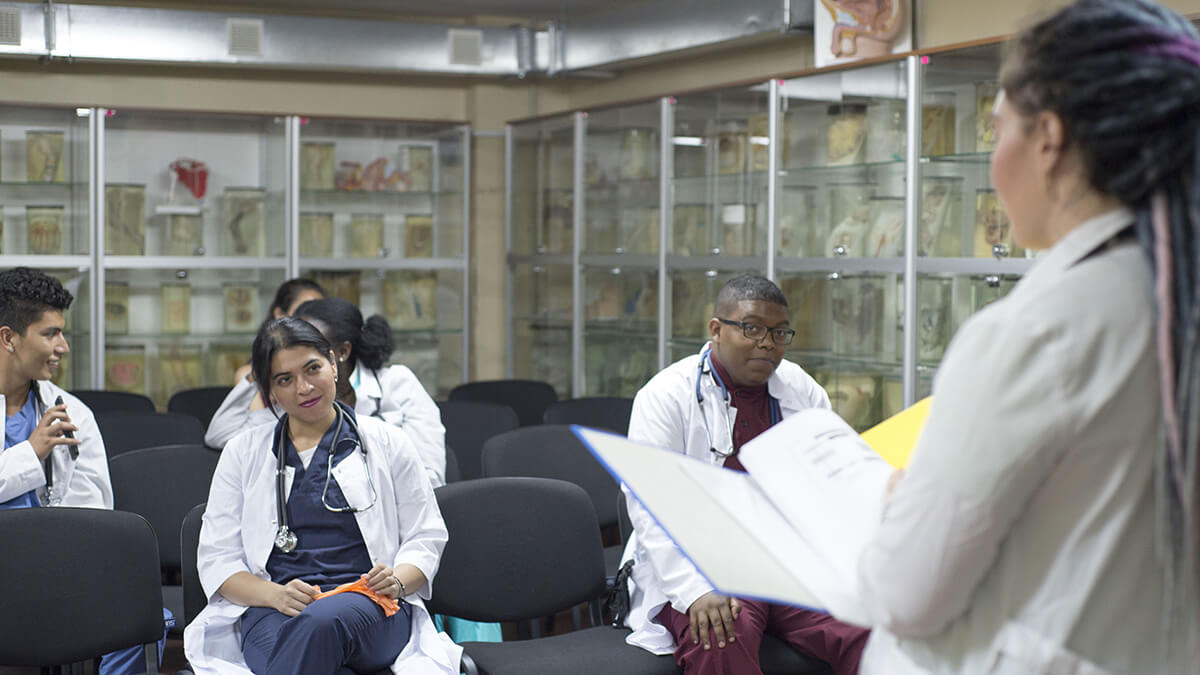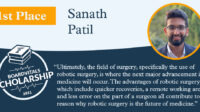Today, at an outpatient practice or in an inpatient hospital, a healthcare provider is asking themselves: Can we do this differently or better?
This was the question that Dr. Mike Evans posed when he noticed that patients who were admitted with fractured hips—many of whom were elderly—developed a number of secondary, in-hospital issues, including pain, delirium, depression, and even death.
Dr. Evans’ care team collaborated with other departments to find a potential cause and, hopefully, a new treatment approach. The team’s analysis yielded this causal fact: At Saint Michael’s Hospital, Toronto, typical pre-op hospital stays often exceeded two or more days. So the team asked: “By triaging and fast-tracking these patients into surgery, could we improve pre- and post-surgical outcomes?”
What is Evidence-Based Medicine?
From its clinical observations, to its problem-solving analysis, to the improved protocols and practices, Dr. Evans’ quality improvement project (showcased at the Institute for Healthcare Improvement (IHI) website), is an example of evidence-based medicine (EBM) at work.
Except for this: In addition to evaluating and changing the “treatment as usual,” did the team consult the emerging research on, say, geriatric medicine and pre- and post-operative risk factors associated with inpatient orthopedic surgeries?
Based on the IHI’s whiteboard video, we don’t know.
However, we do know that, based on this (and other) peer-reviewed studies, evidence-based medicine is defined as “the conscientious, explicit, and judicious use of current best evidence in making decisions about the care of individual patients.”
Old and New Science: The Origins of EBM
Some evidence suggests that EBM dates back to ancient Greece or ancient Chinese medicine. Other medical researchers trace it to the 11th Century and Avicenna’s Canon of Medicine. More recently, during the Crimean War, Florence Nightingale observed that, rather than dying from battlefield injuries, many of her patients were dying from in-hospital or healthcare-associated infections (HAIs). In response, Nurse Nightingale developed, taught and instituted a set of infection-control protocols that are still in use today and that typify the practice of EBM.
However, the term “evidence based” didn’t appear in the medical literature until the early 1990s. Since then, we have been educating doctors, nurses, nurse practitioners, medical assistants and other clinicians to build or expand their skills in the delivery of evidence-based, patient-centered care.
How Is Evidence-Based Medicine Different from “Traditional” Medicine?
Broadly speaking, EBM deviates from “traditional medicine” in three ways:
- Better scientific evidence: Traditional and EBM approaches rely on peer-reviewed clinical evidence. However, EBM demands better scientific evidence than we previously used.
- Patient-centric care: Rather than a prescriptive or “cookbook” approach (‘this is how it’s done’), all evidence-based practice starts and ends with the patient—including that patient’s cultural and individual preferences.
- Bench to bedside: In its definition, the National Institute of Health characterizes EBM as “the intersection of research, evidence and clinical practice.” So, EBM requires clinicians to translate well-vetted and emerging research into their real-time patient care.
5 Steps to Evidence-Based Medicine and Related Implications for Medical Education
In its metanalysis of EBM pedagogy, this “Academic Medicine” study posits that EBM training requires mastery and development of complex cognitive skills as we educate students to find, translate and integrate evidence into their daily practice. Also, whether we build standalone EBM curricular modules, or integrate EBM into “regular” clinical training, all teaching must include or incorporate EBM’s five skill areas or steps.
Step 1: Problem definition
Remember how Dr. Evans and his care team observed a persistent incidence of secondary issues among patients admitted with fractured hips? As we learn in the IHI video, clinical observations must get distilled into a focused question or quantifiable problem (can we reduce the incidence of pain among this patient cohort from percentage B to Percentage A)? Also, clinicians need to learn how to prioritize among competing and co-occurring patient needs.
Step 2: Clinical Research: Searching for the evidence
Different from traditional “journal clubs,” EBM curricula or training equips our students to source, assess and apply research within the context of individual patient scenarios. Once the patient problem or need is defined, clinicians must learn how to find the best clinical evidence to support the efficacy of the new or proposed intervention or practice.
Step 3: Critical appraisal of the published scientific studies and clinical trials.
As we know, not all clinical studies are equal. Clinicians must learn how to classify and rank published science based on factors such as the study’s structure and size, randomization and whether the study is single blind or double blind. We also need to educate students to look for evidence of clinician bias or, in some cases, questionable or compromised research ethics.
Step 4: Applying and integrating the evidence
“As clinicians, we need to be confident in our decision-making,” writes Shannon Casey in a recent Medpage article. Casey, a physician assistant and former assistant teaching professor in the Department of Family Medicine at the University of Washington, adds: “We also need to keep an open mind — at least open enough to be able to incorporate emerging high-quality evidence that may change the way we practice.” By applying the principles of problem-based learning and other pedagogical approaches, medical educators can help students to translate their research into real-time care delivery.
Step 5: Evaluating and measuring the impact
In our cited Toronto quality improvement project, the team succeeded in reducing pre-surgical hospital stays for 60-90% of newly admitted patients and established a maximum of 48 hours for all hip-fracture patients. Once clinicians have translated their research and skills into practice, they need to learn how to measure, quantify and document the outcomes data.
Developing and Evaluating Your EBM Educational Modules: BoardVitals Can Be Your Partner
Speaking of outcomes data, when Dr. Michael Greene of Yale University’s Primary Care Residency Program conducted a national survey of 269 internal medicine programs that offered EBM curricula, less than half of the programs (36%) included post-training curriculum evaluation.
Also, a study published in The BMJ (British Medical Journal) asserts that, while more medical schools now teach evidence-based medicine, there is little published evidence on what curricular approaches or teaching methods work best.
As experts in developing content and question banks for many medical education institutions, BoardVitals can customize and manage an educational and post-training evaluation package that works best for your institution.
With experience in evidence-based medical education across 70 specialty areas, our board review and CME content is expertly vetted and consistently updated to build student skill and mimic what students will encounter on examination day.
As we know, utilizing evidence-based medical education extends beyond skill-building. A well-designed medical education program can foster clinicians’ lifelong self-assessment and the propensity to ask and re-ask that question: “Can we do this differently or better?”




